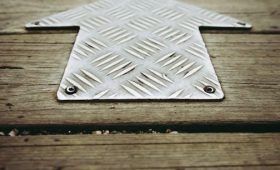O-Ring Groove Sizing Guide provides essential information for selecting correct o-ring sizes and materials, ensuring proper sealing and performance in various applications, using standard and metric sizing types and charts.
O-Ring Face Seals and Applications
O-ring face seals are used in a wide variety of applications, including bolted flanges and removable lids, and are available in many shapes and forms.
The o-ring face seal groove design guide helps choose the right o-ring for the application, considering factors such as pressure and temperature.
O-ring face seals are commonly used in industries such as aerospace, automotive, and industrial manufacturing, where reliable sealing is critical.
The design of the o-ring face seal groove is important to ensure proper sealing and performance, and the guide provides information on how to design the groove for optimal results.
The o-ring face seal is a critical component in many systems, and selecting the right o-ring and designing the groove correctly is essential to ensure reliable operation.
By using the o-ring face seal groove design guide, engineers and designers can select the right o-ring and design the groove for their specific application, ensuring proper sealing and performance.
The guide provides valuable information on o-ring face seals and their applications, helping to ensure reliable and efficient operation of systems and equipment.

O-Ring Size Charts and Measurement
O-ring size charts provide essential measurement information for selecting correct o-ring sizes and materials for various applications using standard charts.
Metric O-Ring Groove Design Reference Guide
A metric o-ring groove design reference guide is crucial for finding the right radius, back-up, pressure, and other o-ring dimensions for basic applications. This guide helps in selecting the correct o-ring size and material for a specific application. The metric system is widely used in the international community, and having a reference guide can simplify the process of selecting o-rings. The guide typically includes tables and charts that list the recommended groove dimensions for different o-ring sizes and materials. By using a metric o-ring groove design reference guide, individuals can ensure that their o-rings are properly installed and functioning as intended. This guide is particularly useful for industries that use metric measurements, such as aerospace, automotive, and manufacturing. With a metric o-ring groove design reference guide, users can easily find the right o-ring for their application and ensure proper sealing and performance. The guide is an essential tool for anyone working with o-rings and metric measurements.
O-Ring Dimensions and Pressure Considerations
Pressure considerations affect o-ring dimensions, requiring careful calculation to ensure proper sealing and performance in various applications and environments, using specific formulas and charts.
Gland Dimensions for Industrial O-Ring Static Seals
Gland dimensions play a crucial role in the design of industrial o-ring static seals, as they determine the overall performance and reliability of the sealing system. The gland dimensions must be carefully calculated to ensure proper fit and function of the o-ring, taking into account factors such as pressure, temperature, and fluid compatibility. A chart listing the most popular compounds and their fluid compatibility is essential in selecting the right o-ring material for the application. The gland dimensions for industrial o-ring static seals are typically specified in design tables, such as Design Table 4-2, which provides guidelines for gland dimensions at pressures up to 103.5 Bar (1500 psi) Max. Proper gland dimensions are essential to prevent o-ring failure and ensure a reliable seal. By following established design guidelines and using the correct gland dimensions, engineers can design effective sealing systems for a wide range of industrial applications.
Importance of O-Ring Groove Design
O-Ring groove design plays a crucial role in sealing, requiring careful consideration of dimensions and materials to ensure proper function and reliability in various applications and systems always.
Standard and Metric O-Ring Sizing Types
There are two main o-ring sizing types, standard and metric, each with its own set of dimensions and tolerances. The standard sizing type was developed for use in the USA, while the metric sizing type is used internationally.
Each sizing type has its own advantages and disadvantages, and the choice of which one to use depends on the specific application and requirements.
The standard sizing type is widely used in the US, but the metric sizing type is becoming increasingly popular due to its simplicity and ease of use.
In addition, the metric sizing type is often preferred for international trade and commerce, as it provides a common language and set of standards for o-ring sizes and dimensions.
Overall, understanding the differences between standard and metric o-ring sizing types is essential for selecting the correct o-ring for a given application, and for ensuring proper sealing and performance.
By choosing the correct sizing type, users can ensure that their o-rings function as intended, and provide a reliable seal in a variety of applications and environments.
O-Ring Materials and Fluid Compatibility
O-Ring materials include various compounds with specific fluid compatibility, ensuring proper sealing and performance in different applications and environments, using charts and tables for selection and reference purposes always.
Dovetail Groove Design for Static Sealing
The dovetail groove design is a type of groove design that is suitable for static sealing applications, where the o-ring is not subjected to movement or vibration. This design features a unique shape that helps to hold the o-ring in place during installation and maintenance, preventing it from being dislodged or damaged. The wall inclination of the dovetail groove creates a locking capability that makes it ideal for static sealing applications. The dovetail groove design is also easy to install and maintain, making it a popular choice for many industries. Additionally, this design can be used with a variety of o-ring materials and sizes, making it a versatile option for different applications. Overall, the dovetail groove design is a reliable and effective solution for static sealing applications, providing a secure and long-lasting seal; It is widely used in various industries, including aerospace, automotive, and industrial manufacturing.


